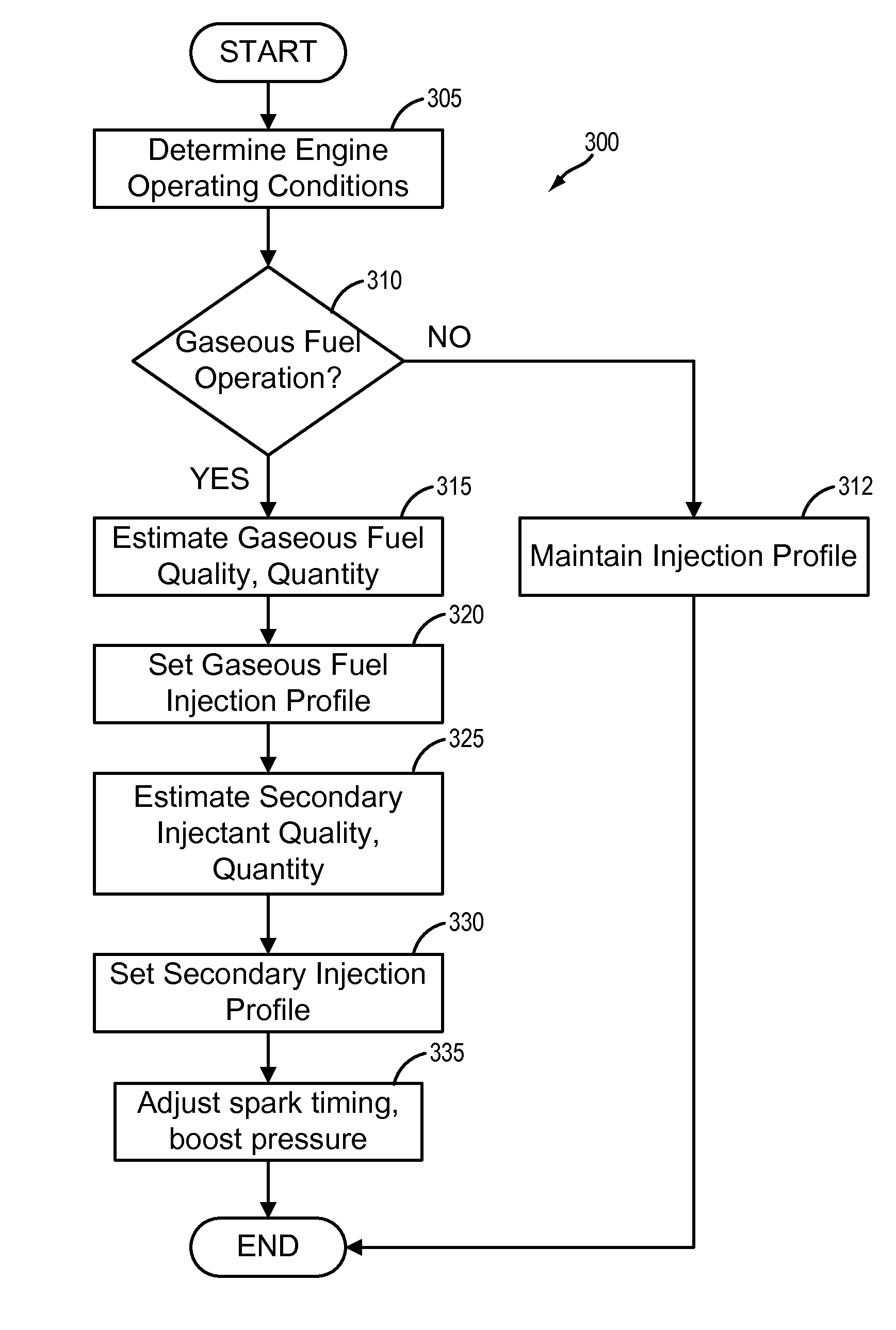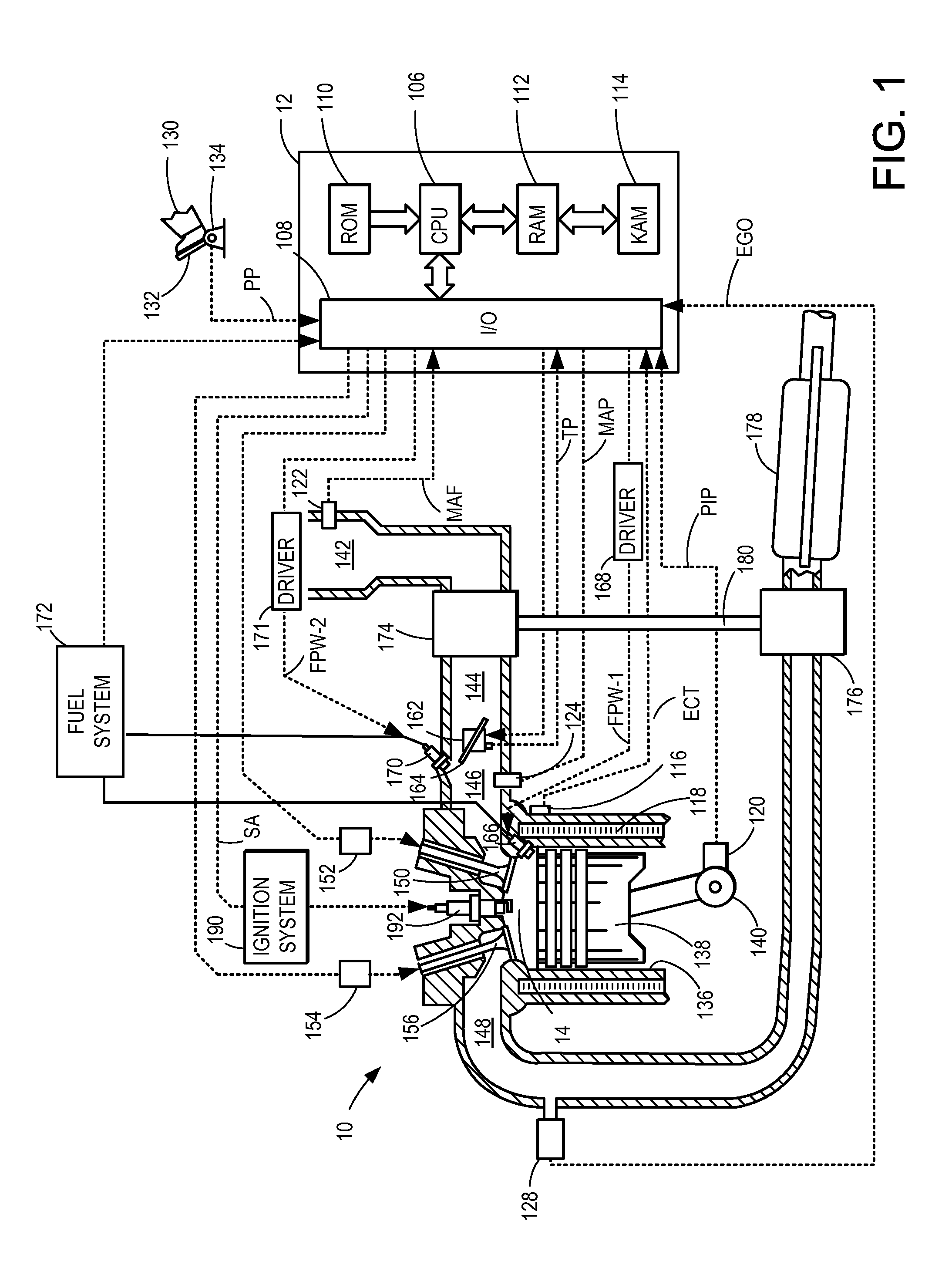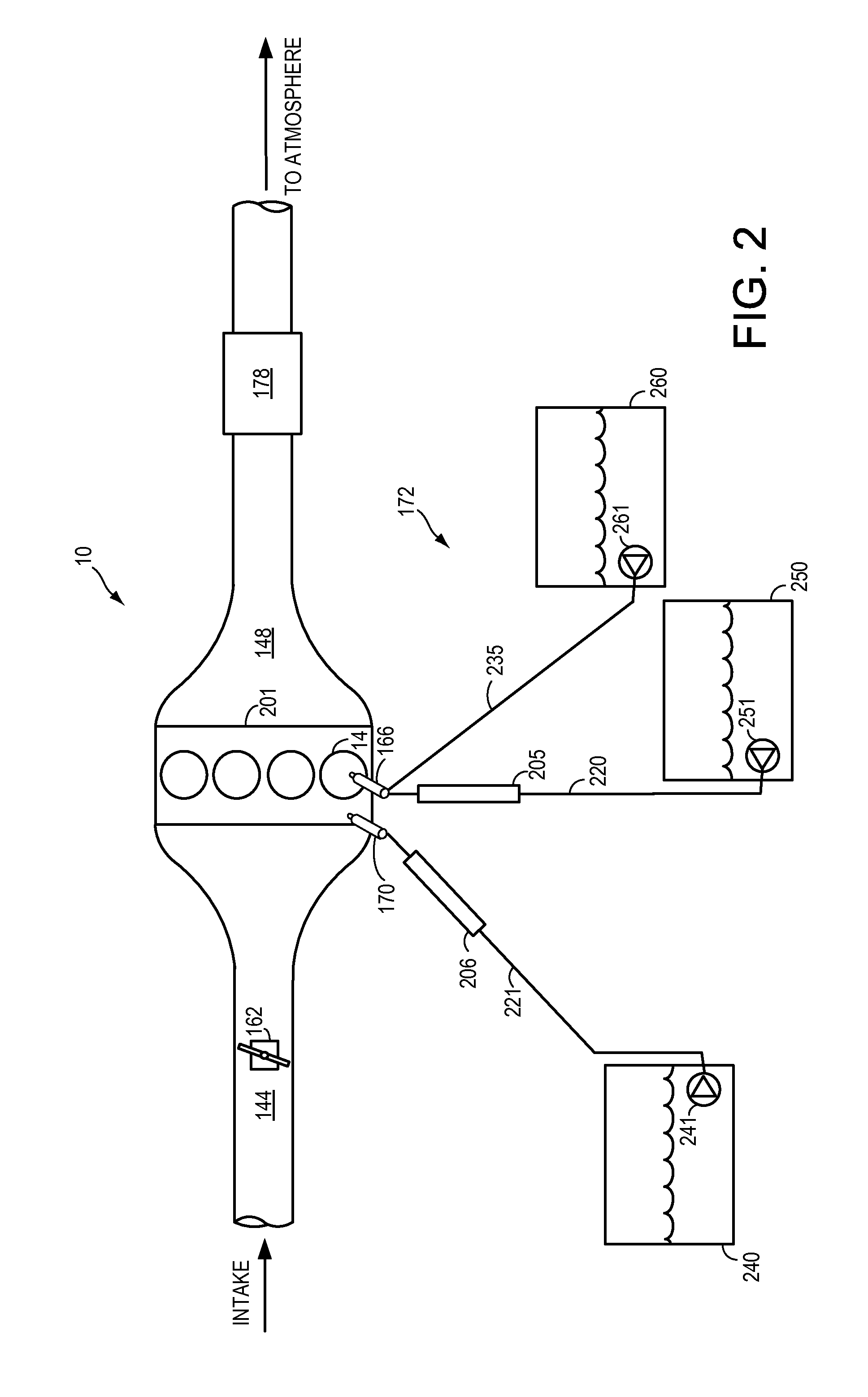Direct injection of diluents or secondary fuels in gaseous fuel engines
a gaseous fuel engine and diluent technology, applied in the direction of machines/engines, mechanical equipment, non-fuel substance addition to fuel, etc., can solve the problems of increasing the likelihood of engine knock, numerous operating problems, and the temperature limit of the engine may be reached prior to the conversion to cng, so as to reduce the exhaust emissions and reduce the price of conventional fuels.
- Summary
- Abstract
- Description
- Claims
- Application Information
AI Technical Summary
Benefits of technology
Problems solved by technology
Method used
Image
Examples
Embodiment Construction
[0024]The following description relates to systems and methods for addressing overheating and engine knock in gaseous fueled engines, such as the engines schematically diagrammed in FIGS. 1 and 2. The systems may include a gaseous fuel tank coupled to a port-fuel injector and a secondary fuel tank of reservoir coupled to a direct-fuel injector. A controller may be programmed to control the rate and timing of fuel injection through a control routine, such as the routines described in FIGS. 3, 4, 6 and 8. The timing of fuel injection may be set to coincide with events during the combustion cycle of an engine cylinder, as depicted in FIGS. 5 and 7. An example embodiment of an engine system with an EGR and reformer device is shown in FIG. 10. The reformer device may be used in accordance to this disclosure to provide a secondary gaseous fuel source. A control routine for a system such as that depicted in FIG. 10 is shown in FIG. 11. Further, the direct-fuel injection may be controlled t...
PUM
 Login to View More
Login to View More Abstract
Description
Claims
Application Information
 Login to View More
Login to View More - R&D
- Intellectual Property
- Life Sciences
- Materials
- Tech Scout
- Unparalleled Data Quality
- Higher Quality Content
- 60% Fewer Hallucinations
Browse by: Latest US Patents, China's latest patents, Technical Efficacy Thesaurus, Application Domain, Technology Topic, Popular Technical Reports.
© 2025 PatSnap. All rights reserved.Legal|Privacy policy|Modern Slavery Act Transparency Statement|Sitemap|About US| Contact US: help@patsnap.com



